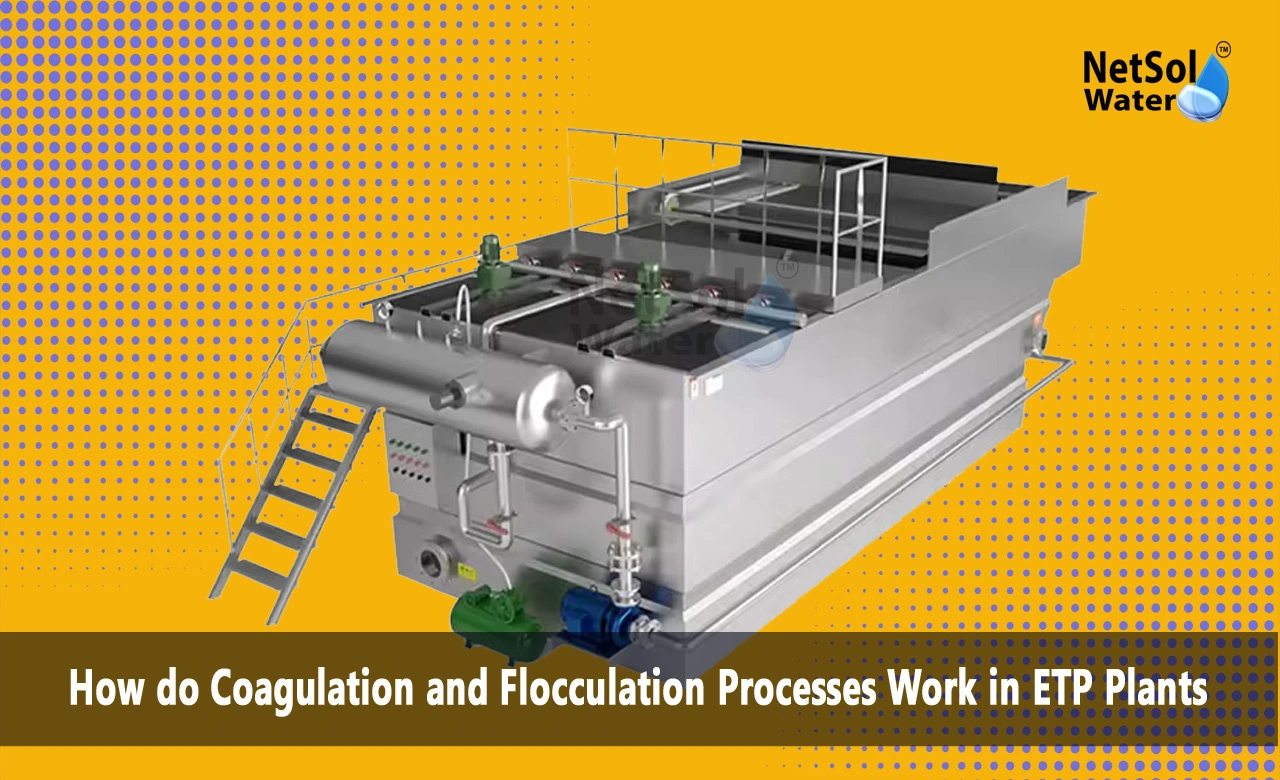How do Coagulation and Flocculation Processes Work in ETP Plants?
Effluent Treatment Plants are crucial for eliminating pollutants and contaminants from wastewater before its safe discharge into the environment. Coagulation and flocculation processes are key components of ETPs, essential for clarifying wastewater and removing suspended solids and dissolved substances. In this detailed exploration, we will explain the mechanisms, principles, and applications of coagulation and flocculation processes in ETPs, shedding light on their importance in achieving water quality standards and environmental sustainability.
Understanding Coagulation and Flocculation
Coagulation and flocculation are chemical processes used in water and wastewater treatment to destabilize suspended particles and colloids, allowing their aggregation and subsequent removal from the liquid phase. Coagulation involves the addition of coagulants, typically metal salts such as aluminum sulfate (alum) or ferric chloride, to neutralize charges on suspended particles and promote their aggregation. Flocculation follows coagulation and entails gentle stirring or mixing to encourage the formation of larger, settleable flocs from the destabilized particles. Together, coagulation and flocculation transform turbid, cloudy water into clearer, more easily treatable effluent, setting the stage for subsequent filtration and disinfection processes.
Mechanisms of Coagulation
Coagulation begins with the addition of coagulants to wastewater, initiating a series of chemical reactions and interactions at the molecular level. The coagulant, typically in the form of a metal salt solution, dissociates into positively charged metal ions (e.g., aluminum or iron) and negatively charged hydroxide ions upon contact with water. These metal ions neutralize the negative charges on suspended particles and colloids through electrostatic attraction, reducing their repulsive forces and promoting particle destabilization. Additionally, coagulants may form insoluble metal hydroxide precipitates, known as floc, which entrap suspended particles and facilitate their removal by settling or filtration.
Factors Influencing Coagulation Efficiency
Several factors affect how well coagulation works in Effluent Treatment Plants, including the type of coagulant chosen, pH levels, mixing intensity, and water temperature. The right coagulant depends on the wastewater's characteristics, like its cloudiness, organic content, and what solids are suspended in it. Adjusting pH to an optimal range, usually between 6.5 and 8.5, boosts coagulation by making sure coagulants and contaminants react well together. Good mixing spreads coagulants evenly and helps clumps form, while keeping water temperature steady ensures the process works smoothly and efficiently.
Principles of Flocculation
After coagulation, flocculation helps particles clump together into larger, settleable flocs by gently mixing or stirring. Flocculation tanks or chambers give particles enough time to collide, stick together, and form bigger aggregates. During flocculation, factors like how much mixing there is, how long water stays in the tanks, and whether flocculants or polymer additives are used affect the size and shape of the flocs. The best flocculation conditions create dense, well-formed flocs that settle easily, making them easier to remove in the next steps, like sedimentation or filtration.
Role of Flocculants and Polymers
In addition to coagulants, flocculants or polymer additives are often used to improve the flocculation process and the quality of treated effluent. Flocculants are large molecules that help particles clump together by bridging, enmeshing, or sticking to suspended particles. These polymers make flocs more stable, help them settle faster, and improve the clarity of treated water. There are different types of flocculants, like cationic, anionic, and nonionic polymers, each with specific benefits depending on the wastewater's characteristics and treatment goals. By adjusting the amount and type of flocculant used, operators can achieve better flocculation performance and improve the overall efficiency of ETPs.
Advances in Coagulation-Flocculation Technologies
Advancements in coagulation and flocculation technologies have brought about innovative processes and equipment that enhance treatment efficiency and cut operational costs in ETPs. For instance, inline coagulation systems inject coagulants directly into the influent stream, ensuring better mixing and dispersal of chemicals. This leads to improved coagulation performance and reduced chemical usage. Similarly, advanced flocculation technologies like high-rate flocculation units or automated flocculant dosing systems optimize flocculation conditions and minimize energy consumption while delivering superior treatment results. Moreover, integrating computational modeling, process control algorithms, and real-time monitoring systems allows operators to dynamically optimize coagulation-flocculation processes and respond to changes in water quality conditions instantly.
Conclusion
Coagulation and flocculation are crucial steps in Effluent Treatment Plants for purifying wastewater by removing suspended solids, colloids, and organic contaminants. By understanding the mechanisms and factors affecting these processes, operators can optimize treatment, improve water quality, and meet regulatory standards. Through advancements in technology, additives, and process refinement, ETPs can enhance coagulation-flocculation, minimize environmental impact, and promote sustainable water management. As wastewater treatment demand rises, mastering these techniques becomes essential for ETPs to ensure ongoing effectiveness in safeguarding public health and the environment.
Do you need an advice or assistance on selecting the best water and waste water treatment unit? We have solutions for all your problems!
Let us know your problem, our experts will make sure that it goes away.
For an assistance or related query,
Call on +91-965-060-8473 Or write us at enquiry@netsolwater.com



